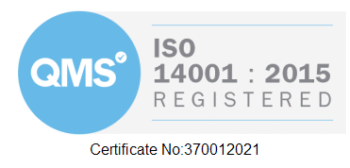Fire rated glass doors and partitions explained

Glass is a popular choice as a room separator in both commercial buildings and homes.
From screens, to balustrades, to doors, glass provides a more open feel to spaces, making better use of natural light, as well as providing sound proofing qualities and even some insulation benefits.
However, when designing a building, safety is always a top priority. This is where fire rated glass doors and partitions come in.
In this article, you’ll learn everything you need to know about fire rated glass for doors and partitions.
What is fire resistant glass?
Fire resistant glass, also known as fire rated glass, is a specialised type of glass designed to withstand high temperatures and prevent the spread of fire and smoke. It is commonly used in commercial buildings, public facilities, and residential properties where fire protection is critical.
Benefits of fire-resistant glass:
- Provides protection against the spread of fire and smoke.
- Allows occupants to evacuate safely in case of an emergency.
- Reduces property damage caused by fire.
- Offers superior sound insulation and energy efficiency compared to traditional glass.
- Enhances the aesthetic appeal of a space by allowing natural light to flow through.
Uses of fire-resistant glass:
- Fire rated doors and partitions in commercial buildings and public facilities, such as hospitals, schools, and government buildings.
- Windows in high-rise buildings to prevent fire from spreading between floors.
- Skylights and roof glazing to allow natural light into a building while providing fire protection.
How is fire resistant glass made?
Fire resistant glass is made in different ways, depending on the type of fire rated glass being produced. Two prominent types are Georgian wire glass and Pyroguard/Pyrobel fire glass:
- Georgian wire glass: This type of fire rated glass has an internal wire frame that is visible as a crosshatched steel wire pattern in the glass. The wire holds the glass together at high temperatures, preventing it from sagging and collapsing.
- Pyroguard/Pyrobel fire glass: These fire rated glass types are made with a heat-resistant, fire-resistant resin that is sandwiched between two or more layers of glass. The resin layer protects the glass from fire and heat, creating a transparent pane of glass that can resist fire for up to an hour.
Regardless of the manufacturing process, fire resistant glass must be tested and certified according to industry standards ensuring it provides the necessary fire protection. It’s important to work with a certified professional to determine the appropriate type and thickness of fire resistant glass for your project.
What temperatures can fire resistant glass withstand?
The specific temperature that fire resistant glass can withstand depends on the type of glass and the thickness of the layers used. In general, fire rated glass can withstand temperatures up to:
- 649°C to 816°C for up to 60 minutes, for some types of Pyroguard/Pyrobel fire glass.
- 232°C to 260°C for up to 20-45 minutes, for some types of Georgian wire glass.
Why is fire resistant glass rated?
Fire resistant glass is rated to ensure it provides the necessary fire protection for a specific application or building. The rating system used for fire resistant glass is based on several factors, including the type of glass, the thickness of the glass, and the length of time that the glass can withstand fire.
In the UK, fire rated glass is classified based on its fire resistance performance, which is measured in minutes. The classification system used in the UK is known as the British Standard (BS) system.
What are the fire ratings, and what do they mean?
The BS system includes several classifications, including:
- Integrity only: Glass that can contain flames and hot gases on one side for a specified time period.
- Integrity and insulation: Glass that can contain flames and hot gases on one side, as well as maintain a specified temperature on the other side for a specified time period.
The fire resistance performance of glass is measured in time increments of 30, 60, 90, and 120 minutes. For example, a glass panel rated as E60 could maintain integrity and insulation for 60 minutes.
How is fire resistant glass tested?
Fire resistant glass must undergo rigorous testing to ensure it meets the necessary fire protection standards . The testing process typically involves subjecting the glass to high temperatures and flame exposure to simulate the conditions of a fire.
The testing of fire resistant glass is typically conducted by accredited third-party testing organisations. These organisations use standardised testing methods to evaluate the fire resistance of the glass.
During the testing process, the glass is placed in a furnace and exposed to high temperatures and flames for a specified period, based on the rating being tested. The glass is then evaluated based on several factors, including:
- Integrity: Whether the glass remains intact and prevents the spread of flames and hot gases.
- Insulation: Whether the glass can maintain a safe temperature on the non-exposed side.
If the glass meets the necessary performance criteria, it will be classified with a fire rating and listed in the relevant certification directory. This certification provides assurance that the glass has been tested and verified to meet the necessary fire protection standards.
What do you think about when using or installing fire resistant glass?
When it comes to using or installing fire resistant glass, there are several important considerations:
- Application-specific requirements:
Different applications, such as doors or partitions, may have specific requirements for the type and rating of fire resistant glass that can be used. It’s important to consult with an experienced professional to ensure the chosen glass meets the specific requirements of your application. - Proper installation:
Fire resistant glass must be installed in accordance with the manufacturer’s instructions and building regulations. Improper installation can compromise the fire protection provided by the glass. - Maintenance and inspection:
Like all building components, fire resistant glass requires periodic maintenance and inspection to ensure it continues to provide the necessary level of fire protection. This may include regular cleaning, inspection for damage, and replacement of any damaged or degraded glass. - Compatibility with other building components:
Fire resistant glass may need to be installed in conjunction with other building components, such as framing or hardware. It’s important to ensure that these components are compatible with the fire resistant glass being used and do not compromise its performance. - Cost considerations:
Fire resistant glass can be more expensive than standard glass, so it’s important to consider the cost implications of using fire resistant glass in your project. However, the added fire protection provided by fire resistant glass can be invaluable in certain applications, particularly in commercial buildings or areas with high fire risk.
By keeping these considerations in mind, you can ensure that the fire resistant glass you use or install provides the necessary level of fire protection for your specific application.
What type of project is fire resistant glass best for?
Fire resistant glass can be a good choice for a wide range of projects where fire protection is a priority. Here are a few examples of the types of projects that may benefit from the use of fire resistant glass:
- Commercial buildings: Fire resistant glass is often used in commercial buildings, such as offices, hotels, and hospitals, where fire safety is a top priority. This may include applications such as fire doors, windows, partitions, and curtain walls.
- High-rise buildings: In high-rise buildings, fire safety is particularly important due to the potential for fires to spread quickly through the building. Fire resistant glass can be used to help prevent the spread of flames and hot gases in the event of a fire.
- Public buildings: Public buildings such as schools, government buildings, and museums may also benefit from the use of fire resistant glass, particularly in areas where fire safety is a concern.
- Residential buildings: While fire resistant glass is less common in residential buildings, it may be used in certain applications such as fire doors or in areas with a higher risk of fire, such as kitchens.
Ultimately, the decision to use fire resistant glass depends on the specific requirements of your project, as well as any applicable building regulations. At Express Toughening, we offer a range of different fire safety glass products, cut-to-size, and can advise and guide you to ensure you get the right glass for your project. Get in touch with us today on 020 8500 1188, via email info@expresstoughening.com. Alternatively shop our fire rated glass range online.




